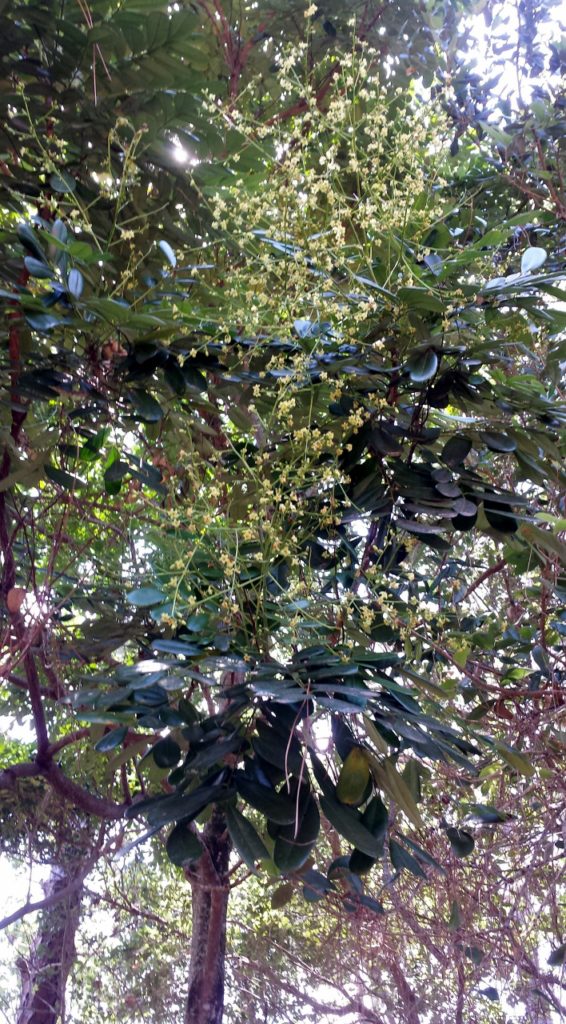
Paradise Tree
Simarouba glauca
Paradise Tree is one of our most tropical looking trees with shiny, dark green compound leaves and a straight trunk that can grow to 50 or 60 feet tall. The 16 inch long leaf has 16 or more three inch oval leaflets.
This tree is found in the Florida Keys and along the coast up to Brevard County. It can tolerate some salt air, but little salt water flooding and is very drought tolerant in average soil. Rich soil will give you a faster growing tree and darker green foliage though.
Paradise Tree is not tolerant of cold air and one inch diameter branches along with all the leaves will be damaged at forty degrees. A freeze may cause extensive loss of branches.
It is surprising to find Paradise Tree naturally in tree islands and moving onto high ground along roadways on the north end of Apoxee trail. This preserve is west of the Turnpike in West Palm Beach. It can also be found in Corbett Wildlife Management Area.
Other hammock species can be found in these unlikely areas including Wild Coffee, White Stopper, Marlberry and Graytwig (Schoepfia schreberi). It is nice to know that by planting our coastal trees in areas west, you are just speeding up the natural movement of these plants.
The higher, more fertile ground with protection from cold air that our new communities provide is a natural place for these plants to move into. Too bad the invasive exotics often beat them there first.
The flowers attract many pollinators in April and the olive sized fruits feed wildlife. The fruit are bitter, yet not poisonous. You will need to plant a male and female in order to have fruit on this dioecious tree.
Paradise Tree mixes well with other coastal and Keys’ trees. For a dense canopy similar to what you might see in the Keys try spacing a variety of trees from three to thirty feet apart in a random manner.
Plant a tight group of five different kinds of trees only three to ten feet apart with others farther away. The close trees will become one canopy with a mixture of bark types and clean lower trunks. These can include Mastic, Pigeon Plum, Wild Tamarind, Poisonwood, Fishfuddle, Gumbo Limbo, Satinleaf, Soldierwood and Soapberry.
Paradise Tree also makes a great stand alone specimen in the front yard. The understory can be any mix of shrubs and ground covers although Coontie, Beach Creeper, low growing Snowberry and managed Wild Plumbago will really set it off.